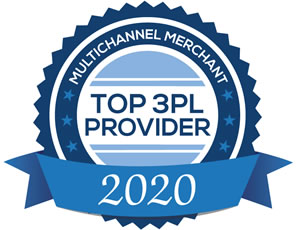
The subscription box craze has heated up in recent years, and indications point to it sticking around. After nearly a decade since the first pioneers popped up in the subscription box space, the industry now contains 3,500 established box services worth roughly $10 billion.
As the industry matures, more and more internet retailers and eCommerce vendors are looking to enter the market. If this sounds like you, you’ve come to the right place. In this in-depth guide, we’ll explore the growth of the subscription box eCommerce model and project whether new internet retailers are well-suited to join this growing industry.
What Are Subscription Boxes?
Subscription boxes are a form of product distribution that involves the recurring delivery of boxes full of niche or hobby-related products. These boxes are a part of a marketing strategy in which subscription-based products are sold to niche communities. Subscription box communities are built around a shared interest or hobby (e.g., fishing, video games, etc.).
Popular subscription boxes exist for every niche interest or hobby imaginable. There are subscription boxes available for everyone. For instance, there are boxes marketed to Minecraft video game players, Canadian fly fishermen, rock musicians, and comic book fanatics. If you don’t believe us check out this list of the most successful subscription boxes on the market.
There are three popular types of subscription boxes, which we’ve listed below. The type of subscription box you decide to launch will ultimately depend on the type of product or service you sell, and the industry you are a part of:
-
Mixed: Customers are aware of one or two included products, with the remaining products chosen at the vendor’s discretion.
-
Retail: Customers pre-select the items they want, which are delivered at regular, pre-approved time intervals.
-
Mystery: Customers are unaware of the products included in the box but may know of the general theme of the box for the month or quarter.
If you’re on the fence about what type of subscription box you should launch, consider starting with a mixed box. The combined box type is a flexible solution that lets eCommerce vendors choose one or two main products to market, and then add in accessories and bonus pieces.
How Does the Subscription Box eCommerce Model Work?
Customers interested in purchasing a subscription box can purchase them online. Typically, eCommerce vendors market their subscription boxes on social media platforms and use influencer marketing to appeal to a wide audience base. From there, customers navigate the sales funnel to the sign-up page on the vendor’s eCommerce site.
From there, customers usually select what their preferred items are and how often they would like to receive a box (i.e., monthly, bi-monthly, or quarterly). Also, customers usually also have the chance to select the “tier” of their subscription box value (i.e., $40 monthly, $60, or $80).
Last, the subscription boxes ship at regular intervals to the customer’s door. Generally, all logistical responsibilities are offloaded to third-party shipping companies. FedEx, Purolator, or the US Postal Service can handle large volumes of parcel shipping at a discount rate. Occasionally, customers can exchange one or two items they receive in their box.
What Are the Benefits to The Subscription Box Model?
The key selling point of subscription boxes is that they introduce customers to products that they otherwise would never have the chance to try. In other words, customers can use subscription boxes to try brands and products without assuming any serious risk.
Subscription boxes offer vendors amazing earning potential, as well as the freedom to get creative with their product options. Internet retailers can stuff boxes with whatever products they want to showcase or liquidate, which ensures very little surplus inventory at the end of the production cycle.
The Benefit of Simplicity
Perhaps the most significant benefit of the subscription box business model is that it is simplistic and straightforward. The business model is based around customers receiving their product regularly via the mail. As such, eCommerce business owners can enjoy regularity in knowing how much product needs to be shipped and when.
Subscription boxes are naturally easy to scale. During the early days of a subscription box development, it’s easy for entrepreneurs to work out kinks in the formula or refine their processes. As the company grows, business owners can develop a more efficient shipping and marketing operation over time.
A Time-Tested Business Model
The eCommerce space is often mired by risky business models that are unproven. Fortunately, however, the subscription box business model is a tried-and-true formula that is known to reap high rewards for internet retailers.
Presently, there are hundreds of successful subscription boxes that entrepreneurs can learn from. For instance, the popular men’s grooming box “Dollar Shave Club” grew so rapidly that it was acquired by British-Dutch multinational Unilever. In the video game and comic book niche, Loot Crate has grown to become a multi-million-dollar success story.
One-Time Checkout
Unlike other eCommerce business models, the subscription box model requires customers to navigate a sales funnel only once. Therefore, subscription box customers have the convenience of only having to input their credit card information once and then they can forget about it. By contrast, regular eCommerce sales must be repeated for returning customers.
Key Performance Indicators That Drive Growth
There’s a lot that goes into determining whether a subscription box is succeeding. Unlike conventional eCommerce sales, you cannot merely look at year-over-year revenues and determine long-term forecasts. Rather, there are a handful of key performance indicators (KPIs) that help eCommerce vendors determine subscription box success.
Cost of Goods Sold (COGS)
The COGS metric informs eCommerce business owners about how much each subscription box costs them. This figure includes the cost of the box as well as its various contents. The COGS figure can be subtracted from gross revenues for a more accurate idea of a business’s profitability.
Customer Acquisition Cost (CAC)
The CAC metric lets business owners know how much it costs, on average, to acquire a new customer for their subscription service. Companies with high marketing budgets often drive up CACs with influencer marketing or social media advertising campaigns.
Customer Lifetime Value (CLV)
The opposite of the CAC is the Customer Lifetime Value (CLV). This statistic tells business owners how much they stand to earn from the average customer for the duration of the average subscription time.
Revenue Per Box
Perhaps the most straightforward statistic is the Revenue Per Box (RPB) figure. The RPB is merely the cost of an average subscription box sale for the period of one subscription term. In other words, RPB records how much money each box brings in every time it ships to the customer.
Shipping & Fixed Costs
You cannot form an accurate picture of your business’s “sunk costs” without considering shipping and handling fees. Find out how much you must pay for shipping, handling, and insurance for each box, as well as other fixed costs. Your business’s fixed costs are the “overhead” fees that do not change significantly from year to year.
Sales
Of course, there’s no indicator of an eCommerce business’s success like their sales. If you’re in the business of selling subscription boxes, you can easily track the total sales of boxes per day, week, month, quarter, and year.
Gross Profit
The gross profit KPI is calculated by taking the total cost of goods sold (COGS) and subtracting it from the total box sales. This figure presents a more holistic view of your company’s financial health than overall sales or revenues.
What’s the Outlook For The Subscription Box Industry?
In April 2018, unique American visits to subscription box websites reached over 40 million. Every year, the number of visitors searching for subscription boxes rises. The outlook for the subscription box industry in the years ahead is overwhelmingly positive—there’s no end in sight for the subscription box industry.
The rapid success of subscription boxes like Dollar Shave Club, Loot Crate, and Blue Apron created a massive trend in the market. Within a span of five years, over 3,000 subscription boxes entered in the American market, and many of them have seen incredible success. The mystery factor and the convenience of subscription boxes have aided their success.
However, subscription boxes aren’t a sure thing for eCommerce business owners. Some risks and setbacks that hold the subscription box model back. For starters, it’s hard to find a product niche that’s tempting in the eyes of a consumer—after all, would you be willing to drop $15 a month on dental gear? Plus, it can be very difficult to source high-value content for your box that can be purchased reliably every month.
Overall, the subscription box business model has proven successful countless times, and the trend isn’t going away. However, a high churn rate and difficulty acquiring customers can hold back eCommerce vendors from adopting this model. Despite this, the subscription box model can provide a reliable long-term source of revenue for passionate eCommerce vendors when done right.
Business Tips and Industry News
For more news and tips on all things business and e-commerce, visit our e-zine. Our e-zine is also available as an rss feed.



